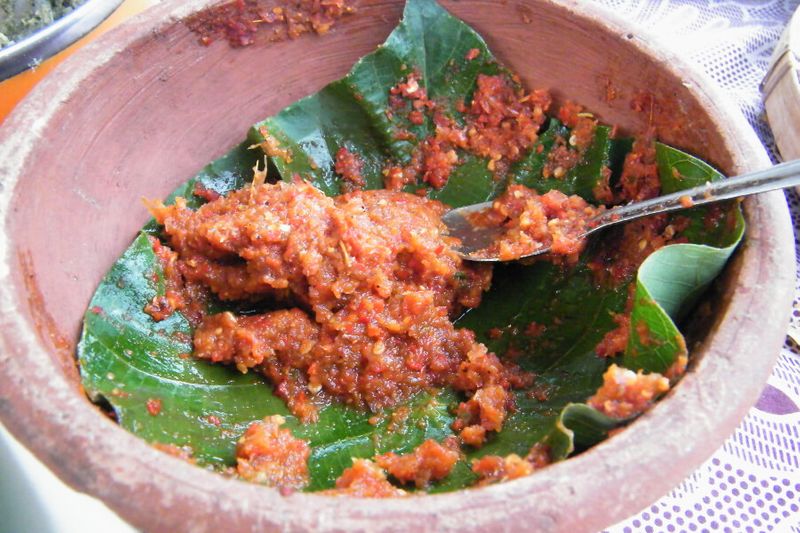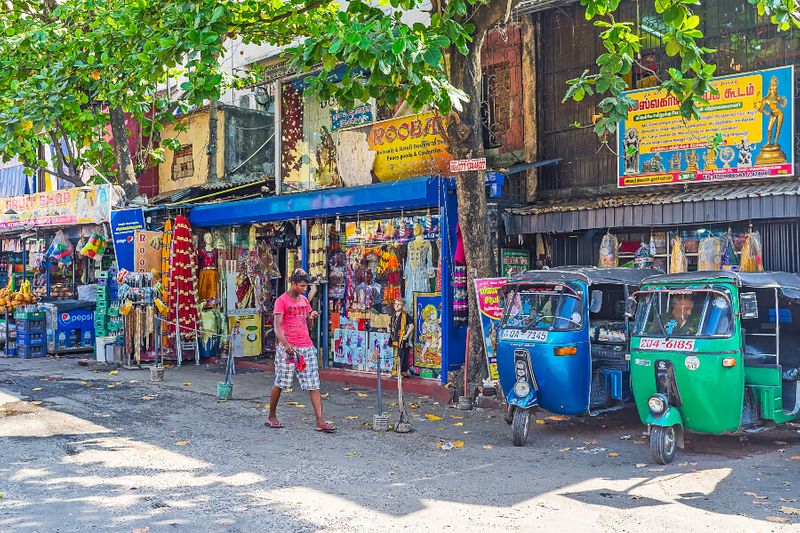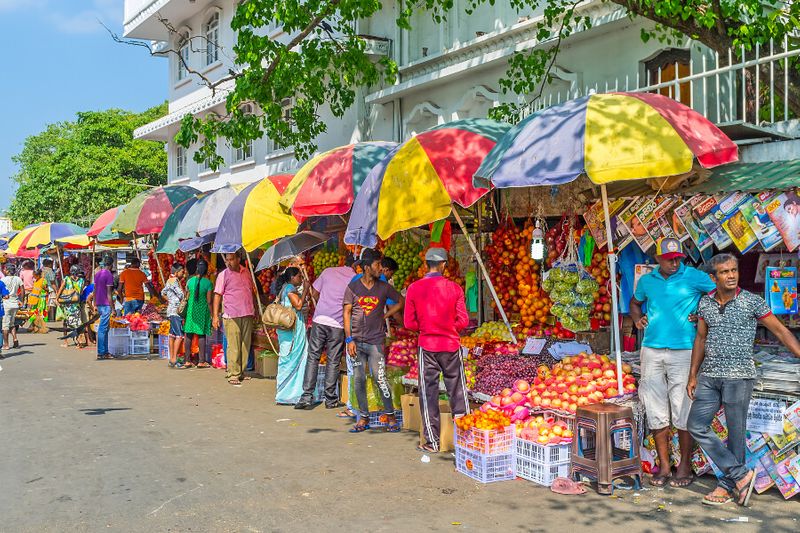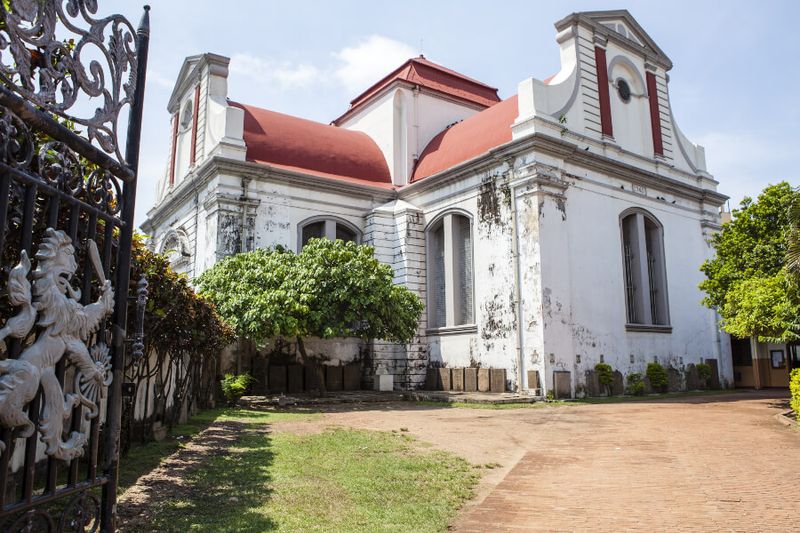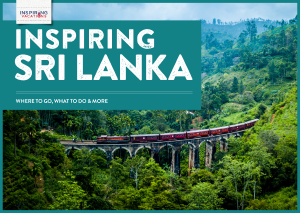One of Colombo’s most famous attractions, this huge bazaar has something for everyone, especially bargain hunters
Pettah Market is a chaotic landmark in the heart of Colombo, with a fresh market that sells wholesale produce, food, and spices, as well as bazaars that specialise in jewellery, gold, souvenirs, electronics, toys, textiles, and more. The market itself spans several city blocks in the Pettah neighbourhood, and is known as one of Colombo’s busiest commercial spaces. As expected with any open-air street market, expect lots of noise, crowds, and prepare to haggle for a fair price. At the entrance of the market stands the historic Khan Clock Tower, built by two brothers from Bombay, Bhikhajee and Munchershaw Framjee Khan, and completed around 1923.
Some local eats and garnishes to try are lunu miris – a distinctly Sri Lankan sauce that contains red onions, dried chillis and fish – egg hoppers, and a street food favourite, kotthu. There is, of course, the tropical fruit: rambutans, mangosteens, wood apples, jackfruit, tamarinds, and more. The spice section is a feast for the senses: be sure to grab some cinnamon – one of Sri Lanka’s most famous historic exports – and check out the range of ayurvedic herbs and ingredients used in many traditional Sri Lankan households.
Sea Street is one of Pettah’s best-known areas – it’s the home of its famous gold trade, dominated by Tamil migrants. While there are tons of clothes for sale, many pros recommend focusing on the high-quality textiles instead and taking them to a good tailor. With many market-goers and vendors doing wholesale business, there are loads of trucks, tuk-tuks, wheelbarrow-pushing porters, and boxes being carted around, so be careful, and watch where you’re going.
The history of Pettah
Pettah grew out of the bustling trade from British colonial rule, when Colombo became the country’s capital in the early 1800s. Much of the district’s port-centric business was done by Sri Lanka’s Muslim community, which have lived on the island for over a thousand years. Even today, many of Pettah’s residents are Muslim, but the entire neighbourhood is a melting pot of Sri Lankan multicultural life (keep in mind that some Muslim-owned shops will be closed on Fridays). The Sinhalese name for Pettah is Pita Kotuwa, which translates to 'outside the fort,' referring to the Colombo Fort.
Notable buildings
Perhaps the best-known architectural landmark in Pettah is the Jami Ul-Alfar Mosque, a striking red-and-white structure that’s one of the oldest mosques in Colombo; its iconic domes are said to be drawn from the round shape of the pomegranate. Pettah is also home to the Dutch Museum, which has a lovely, peaceful green courtyard for those looking to escape the hustle and bustle. There’s also Kayman’s Gate, a bell tower so named because of the crocodiles (Dutch: kaimaan) found in Beira Lake – these were known to gather to eat rubbish around the local fort, and allegedly used to keep slaves under control. There’s also the Wolvendaal Church, one of Sri Lanka’s oldest Protestant churches that was built in 1757, which now owns the bell that belonged to Kayman’s Gate.
